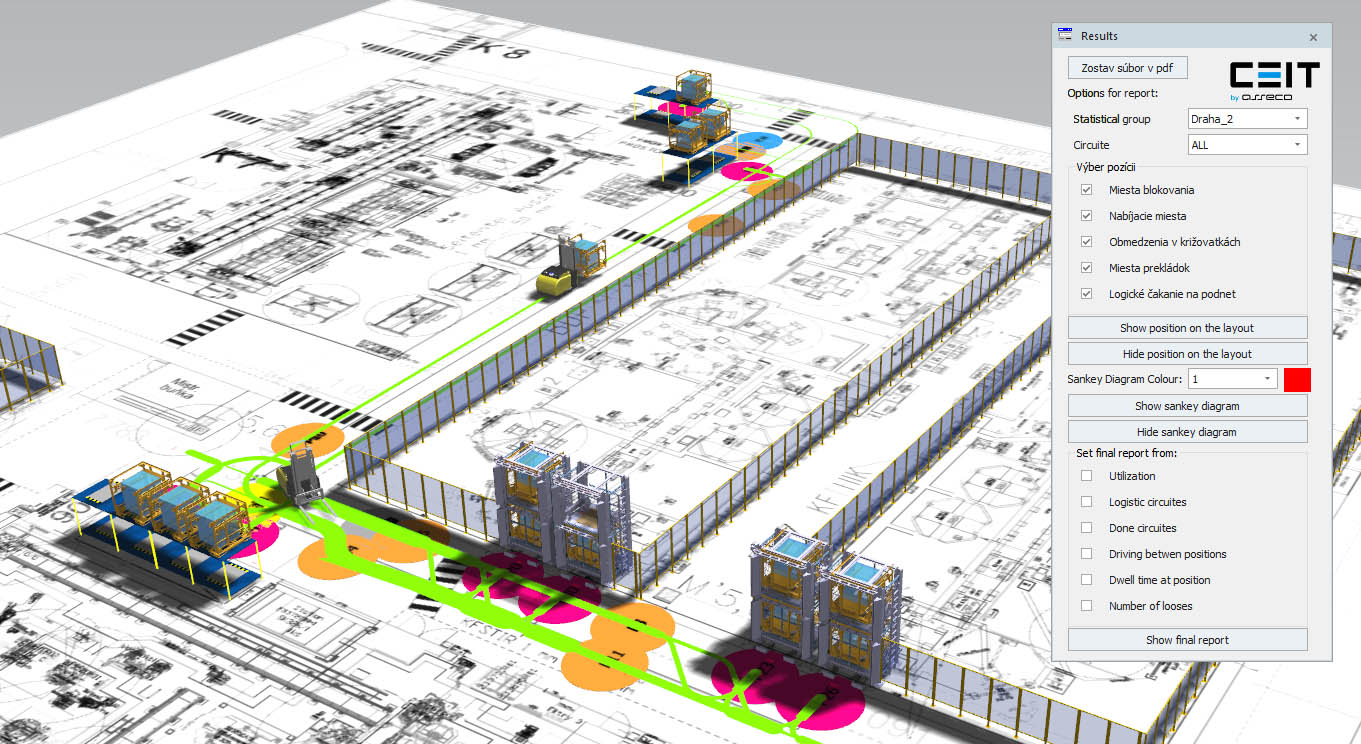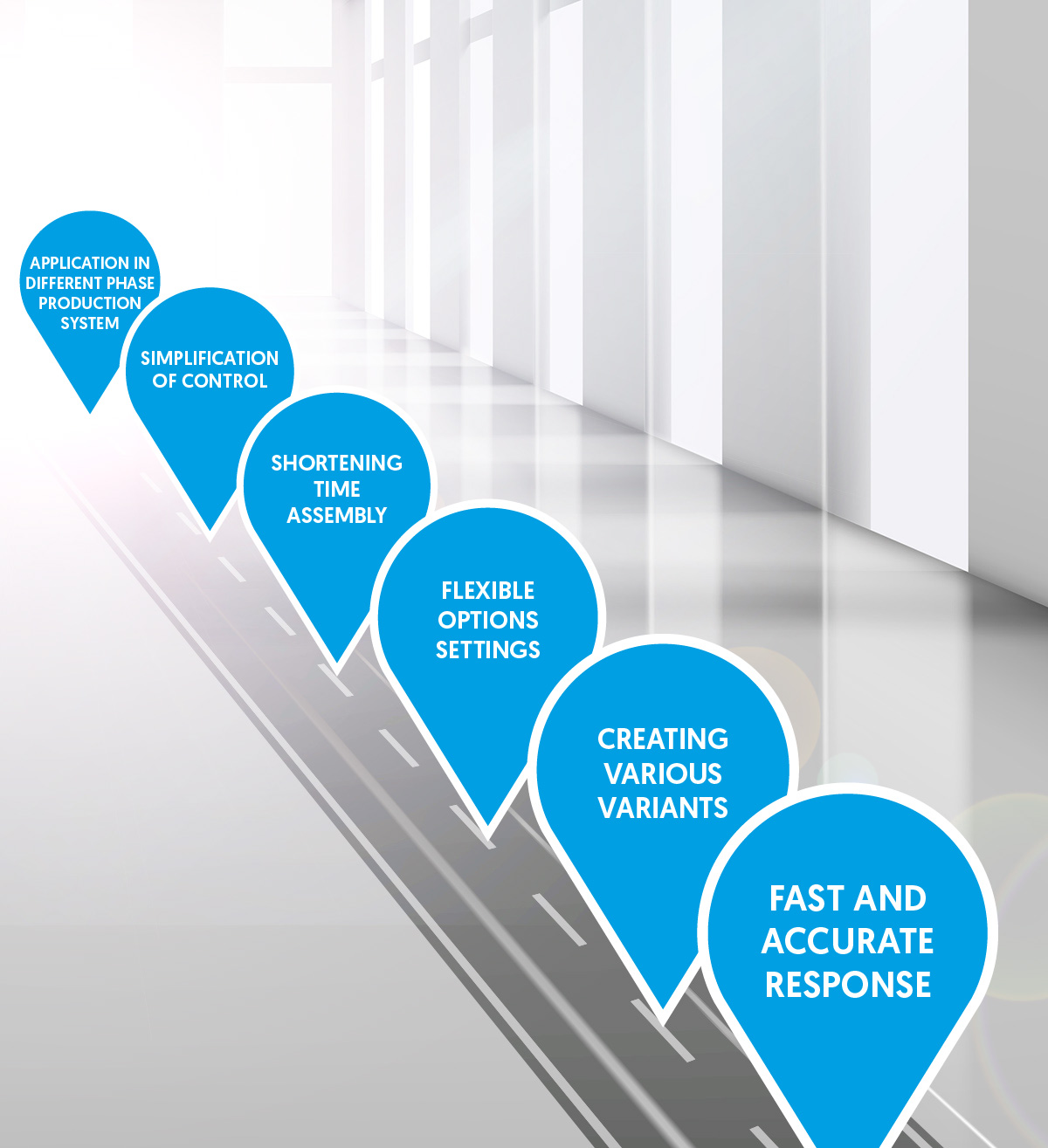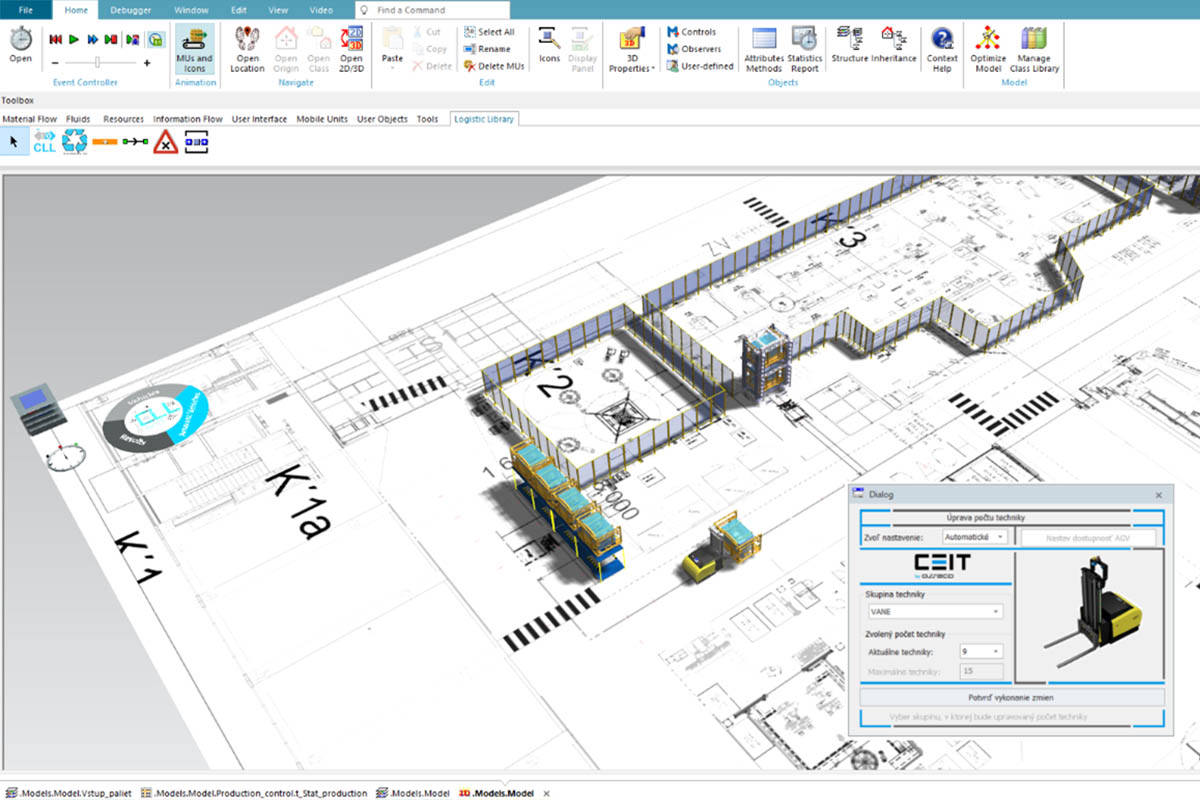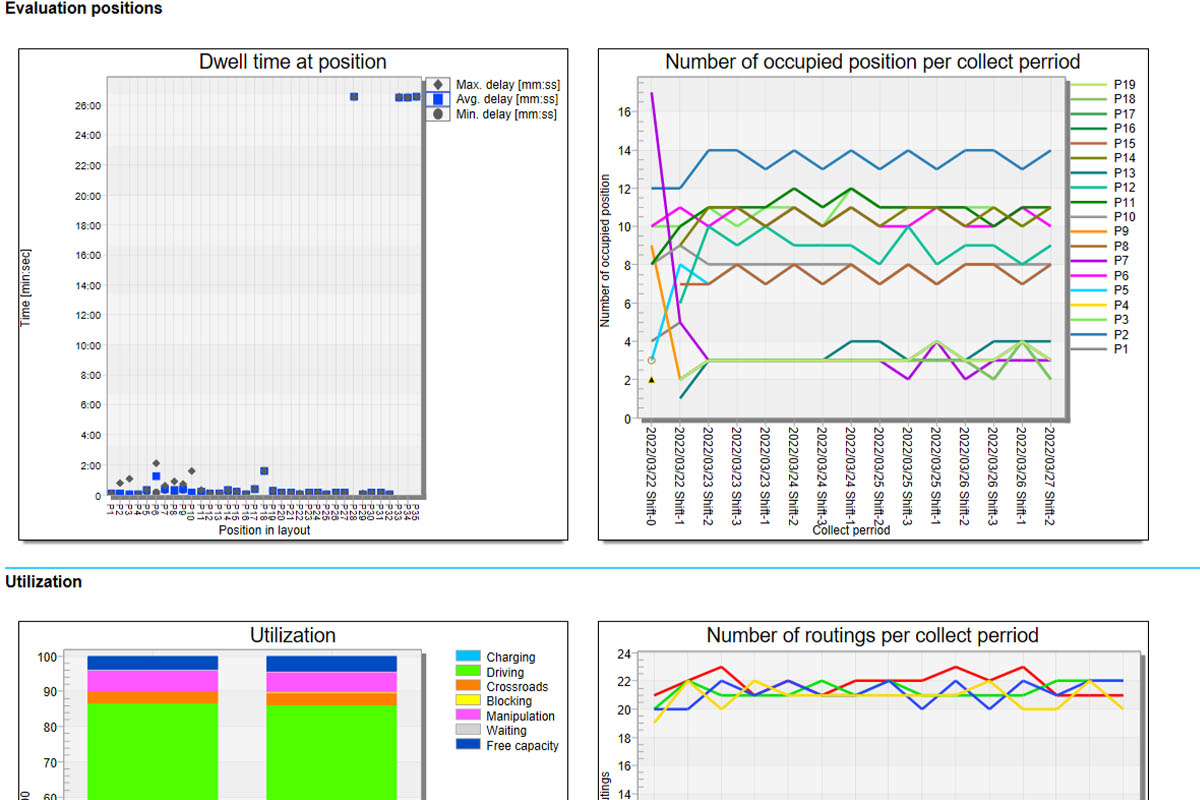Dynamic simulation as the heart of the planning process
Traditional planning and optimisation methods use static models and assumptions which don’t take into account changes and dynamic events which occur during a process. This can lead to suboptimal results and increased costs. At the same time, the key to a successful project realisation is to know the impact of one or another factor before implementing the proposal into real production. This is where dynamic simulation comes into the game.
Dynamic simulation is a tool which allows processes and systems to be modelled in real time, with the option of predicting their behaviour in different conditions and scenarios. This enables us to gain a better understanding of the dynamics of the processes and their mutual interaction at different points in time, which is essential for effective planning. This is why in this blog we want not only to point to the benefits of using dynamic simulation tools, but also share our long years of experience in planning production and logistics processes in a modern production environment.
What do we consider the main benefits of dynamic simulation?
Regardless of whether we are dealing with a production or a logistics system, or a combination of both, it’s not enough to know the capacity of the equipment and their average load during planning. We also need to take into account the logic of how processes and procedures work, how impulsive production is and how the elements are attuned to each other. Conventional planning methods often show deviations of up to 20% compared to reality as a result of not taking into account the dynamics of the system. From our perspective, the main advantages provided by a dynamic simulation for planning processes and their capacities are as follows:
- More precise process modelling: a dynamic simulation enables a more precise modelling of processes and systems, because it takes into account their dynamics and mutual interactions. This helps better understand the complexity of the processes and allows them to identify potential weak points and area for improvement.
- Testing various scenarios: using dynamic simulation, it’s possible to test various scenarios and planning strategies. This allows managers to identify optimal solutions leading to the best results, depending on specific conditions and requirements.
- Predicting results: a simulation enables us to predict results and how processes will behave in the future. These predictions are based on real data and enable us to make informed decisions and optimise planning.
- Faster reactions to change: in a dynamic and constantly changing environment, the key is being able to react quickly to changes. Based on data obtained in real time, the simulation makes it possible to adapt production in real time to current needs.
- Optimising resources: a simulation makes it easier to plan and optimise the use of resources such as labour force, time, materials and finances. This thus achieves a more economic management of means and reduces operational costs.
What tool do we use for planning?
Tecnomatix Plant Simulation, which is a computer application from Siemens Digital Industries Software. With this application, users can design and optimize materials flows, the use of resources and logistics processes at all planning levels. Plant Simulation is used primarily for strategic planning, verifying a suggested logic and also as a support tool for daily production planning.
The environment of the Plant Simulation application makes it possible to create advanced, user modifiable production and non-production objects which represent actual equipment (machine, AGV truck, etc.), and are able to take on their properties based on the defined parameters. Each element can be logically arranged into predefined templates, thus creating a user library. These libraries are used to reduce significantly demands both on time and on knowledge in order to use the application to create a simulation model, to execute simulation experiments and also to evaluated them.
Our company has created its own library known as CLL (CEIT Logistics Library), used to make the processes for planning an automated logistics simple more effective via a dynamic simulation. The extension library contains the following modules:
- Database of objects – contains a complete portfolio of our company’s logistics technology models in 2D and 3D versions, as well as general representatives of manual logistics technology. Each object contains predefined parameters based on technical specifications such as safety zones, charging/discharging algorithm taking into account the weight of the handled material, or predefined animations.
- Operating interface – a user-friendly operating interface which is used to insert and modify individual elements into the simulation model. It contains a database of samples for creating individual logical commands, guiding rules for crossroads, speed restrictions and predefined methods for loading and unloading equipment.
- Statistical module – standardised module containing detailed statistical data on the load of each piece of equipment, the partial or comprehensive reaction times of equipment, delays in transport, maximum transport capacity, energy management of batteries, Sankey diagram, OTE (overall transport effectiveness) and so on.
How do we approach the implementation of dynamic simulation in process planning?
Regardless of the nature of the process being dealt with, we always begin by identifying the goals and processes we will be simulating. In this first phase, we create main and partial goals and define the areas from which we need to gather quality entry data in order to then create a virtual copy of the simulated system which is as accurate as possible.
This is followed by the collection of necessary data on processes and the creation of an exact mathematic or computer model which will serve as the basis for the simulation. The model must be complex and take into account all important factors and their mutual connections.
During the creation of the model, it’s important to verify its correctness, for example by simulating scenarios which have already taken place, and thus to compare the real results with the results we obtain from the simulation.
Once the logistics system and marginal conditions of the production system have been configured, it’s possible to begin simulation experiments. Simulation experiments are carried out on a specific scenario or a series of scenarios defined by the limit values of the transport and production system. The course of the simulation can be monitored by 2D or 3D animations, or can focus directly on evaluating the experiments.
The library’s statistical module has a standardised HTML report (fig. 4) which collects and evaluates individual KPI indicators in an automated manner (equipment load, operating flow of the transport system, battery charging and overall capacity, reaction times etc), which can be exported as a PDF file or an offline webpage. In addition to the standardised report, a simulated scenario can also be analysed based on the analysis of collision stats (graphic representation of each situation on the route – Fig. 2), a Sankey diagram, the load capacity of crossroads and roads based on intralogistics rules. The content of the depicted statistical report can be adapted flexibly using the command menu based on user needs.
After the successful implementation of the proposed solutions comes the conclusion of the project, but in some cases our customers use the simulation model on a daily/weekly basis as a planning application. For this purpose, we prepare a tailor-made command menu for our customer which they can use to set up the system parameters independently, thus eliminating the need for the customer to know how to use the simulation software.
Simulation plays an important role in the planning process in terms of successfully meeting the requirement of a comprehensive evaluation. In order to meet the requirement for minimising the duration of the planning process using simulation, an important role is played by additional libraries which contain standardised objects and samples used to make the model itself.
By using the CLL extended library, our company was able to reduce the process for planning and optimising the AGV automatised logistics system by an average of 35% compared to the original method of planning using dynamic simulation without the CLL logistics library.



